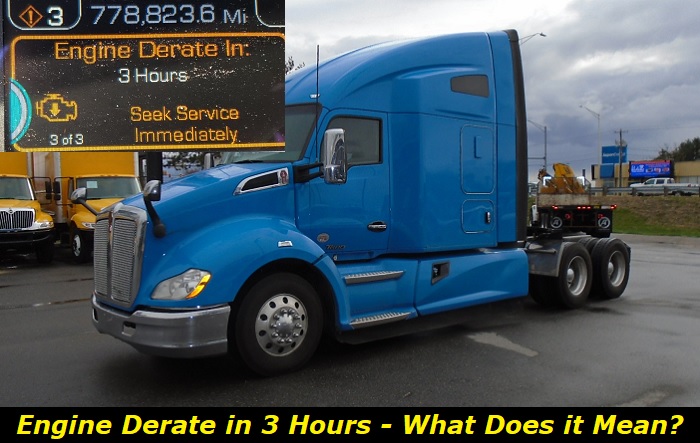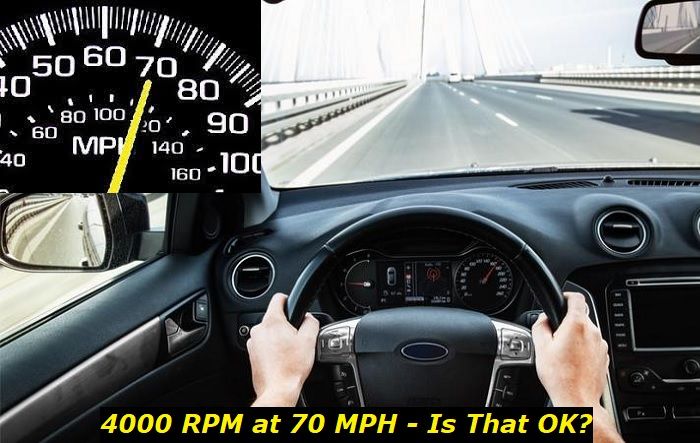An "engine derate" occurs when the software program that controls the engine limits the vehicle's speed and power. The purpose of this function is to keep you from causing damage to your vehicle's engine. However, engine deterioration, also known as derating, can be beneficial in some situations. It extends engine life by lowering significant wear and the possibility of overheating.
Engine derate in 3 hours message highlights
- Common reasons:emission control system problems
- How to fix:use manual regen, add DEF, read the codes
- Possible consequences:engine may lose power
- Priority level:High
- Can you drive?Yes
- DIY repair:Possible
- Repair price range:$50-$1,000

Three Different Ways of Engine Derates
As mentioned, engine derating is the method of altering an engine in a way that it will work at a reduced capacity compared to its actual pace. Derating can be done on purpose to reduce engine problems triggered by excessive wear, leading to longer motor life. This implies you can derate your vehicle's engine to operate at less than its optimum electrical power.
You can purposefully derate the engine of a power supply generator to prolong its life. However, this results in a decrease in power generation compared to the previous regular operational period. Engine derating is not confined to power generators or automobile engines; any device powered by a motor or machine can be derated. However, derating particular motors or devices, particularly on a car, reduce the speed of the vehicle or overall engine performance.
Derating is a method also used to prevent the engine from overheating. Every engine is designed to function in a specific environment, such as the atmospheric temperature. Engine derating is constructed and designed in such a way that it begins when the nearby temperatures reach the engine's average work heat.
A significant surge in the surrounding temperature emits a huge amount of heat and reduces engine performance. Increased fuel consumption is another effect of higher engine temperature. Understanding a few engine notions about how engine derating works is critical. Understanding the three distinct types of engine derating listed below is one of the principles you should have a basic idea about.
Intentional Derate
An intentional derating occurs when a customer requests that the engine rating and capability be reduced. The automaker then reduces the engine rating, and the efficiency of the vehicle is limited to its maximum capability. Every car is designed by manufacturers with a specific purpose in mind, even if this purpose differs from what the customers want. As a result, the customer may demand that the car manufacturer makes some engine modifications, including derating.
There are numerous reasons why a customer may require engine derating for their vehicle. Because the manufacturers are aware of every engine configuration, they will modify all settings and add new bits as desired by the customer.
Other reasons why people opt for intentional derating include saving costs for engine maintenance and prolonging the operational capacity of the car's engine. However, the price they have to pay is the very obvious decline in their vehicle's speed performance.
Unintentional Derate
Unintended engine derating occurs when the vessel's engine fails without the knowledge of the owner or the supplier, which implies that derating can also happen by accident. Engine rating is specially formulated to serve a good number of years and provide the customer with various benefits.
You may not realize unplanned engine derating and continue to drive your car or truck. Because of the derating, the engine's operating environment is significantly changed, and it begins to provide an irregular supply of power.
Every engine is typically optimized for the operating condition at a specific fuel and temperature. For example, if the engine is used in the appropriate climate and is properly supplemented, it will last longer and be more reliable. Otherwise, the engine will not produce the same level of power and may have a shorter lifespan. Otherwise, the engine will not produce the same level of power and may not have a long lifespan.
This is a major reason for customer displeasure because the recommended fuel and fluids are expensive, and not all clients can afford them. Over time, the engine begins to work harder and produce less power than before, which leads to the excessive waste of fuel.
In summary, some consequences of unintentional derating include too much consumption of fuel, a shorter lifespan for the engine, the cost of upgrading to a new knocked-out engine, and a significant decrease in engine performance.
5mph Engine Derate
Various systems or detectors in the combustion system cause 5 mph engine derating. If your engine decelerates by five miles per hour, you should be aware that the fault is related to emissions. Try to familiarize yourself with, if not master, the entire emission system's components to better understand the 5mph engine derates.
One positive side about 5 mph engine derate is that dealers can use the OTR Diagnostics and OTR Reset Tool to resolve fault codes. As a logical consequence, flawed or damaged components can be easily replaced. You will also have the chance to reset the check engine light
What To Do If You Encounter An "Engine Derate in 3 Hours" Warning
An error that states "engine derate in 3 hours" is most likely associated with a treatment aftermath system failure. Generally, this warning signals a problem linked with a NOx sensor, aftertreatment heat sensor, a problem with the DPF or SCR a DEF issue. Many of these problems would not result in the engine shutting down and not restarting as most people describe it.
The error message "engine derate in 3 hours" also implies that you have roughly 400 miles to go before you go down to 15 mph after getting the stop engine light. To validate this, you can try going into the "warning and fault" section on the dashboard, and it'll most likely tell you what went wrong.
Moreover, you can also try shutting the engine off and firing the ignition up to eight times before restarting the engine. Just be careful because you might bust a coolant line and cause it to overheat.
If you encounter a problem while cruising, find a safe area to park your truck, then pop the manual regenerator. Fill in the diesel exhaust fluid tank and see if it fixes the problem. If you have a weed burner, don't park on the grass, and don't park under a tree, especially if it has stacks.
It is plausible that the derate alert and engine shutdown are unconnected in some cases. Many people have a great idea of what you're searching for if you get the fault codes from a shop. The fuel pump is the first element that you should look into. As long as the fuel supply is adequate and the fuel gear pump is operational while cranking, you can remove the fuel pump head and inspect it for possible damages.
If you haven't gotten the fuel pump inner components updated in a while, try doing so while the truck is off. However, apart from a fuel problem, a battery or combustion supply issue in the engine control module is possible. If the engine is running normally and you turn off the key, the temperature will rise by 20 to 30 degrees.
That is completely normal, and if you could ignite the engine, the temperature would simply drop due to the cooling system flowing.
In most cases, drivers discourage other drivers from fixing the problem on their own and instead bring the truck right away to a shop or the manufacturer to run an appropriate diagnosis. Shops will know which codes to unlock and how to fix the problem. The "engine derate in three hours" is one of those very delicate issues that need a real expert's touch to get a real fix.
Conclusion
Every owner of a truck, especially a diesel truck, should become acquainted with the details of engine derate, as it has a direct impact on their everyday travels. In addition, a derated truck can put its user in a difficult situation, especially if they are unaware of the potential consequences of this function.
If you're not comfortable attempting such repairs all by your lonesome, or simply do not have the necessary tools, schedule an appointment with an eligible service center as soon as you can.
About the authors
The CarAraC research team is composed of seasoned auto mechanics and automotive industry professionals, including individuals with advanced degrees and certifications in their field. Our team members boast prestigious credentials, reflecting their extensive knowledge and skills. These qualifications include: IMI: Institute of the Motor Industry, ASE-Certified Master Automobile Technicians; Coventry University, Graduate of MA in Automotive Journalism; Politecnico di Torino, Italy, MS Automotive Engineering; Ss. Cyril and Methodius University in Skopje, Mechanical University in Skopje; TOC Automotive College; DHA Suffa University, Department of Mechanical Engineering






Add comment